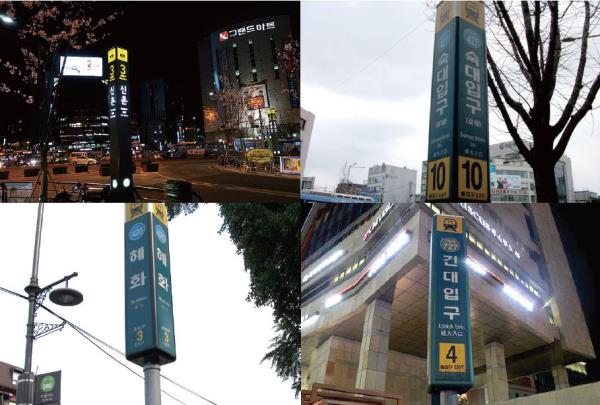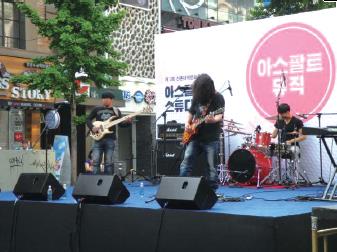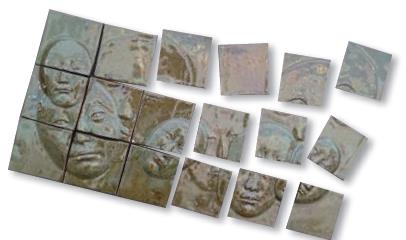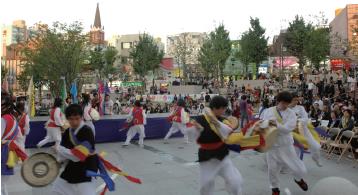
In the past, university streets each possessed unique charms just as depicted in the drama Reply 1994, which ran amidst great popularity. Students enjoyed music, played or cheered sports, and read literature altogether on attractive green lawns. Hence, university streets held enviable positions. However, their attractiveness gradually changed and until recently every university street was lined with franchise restaurants, bars, and noraebangs, which lost the streets uniqueness and the admiration of students. Students became bored of the same restaurants, malls and shops, and they desired new and fresh things. This is how change begun.
Change Your Area

A wind of change can be found in Hyehwa. On Daehangno, Gyeongseong Imperial University was established in 1924 during the colonial period. It later became Seoul National University (SNU), and the street was always filled with students until SNU moved to Gwanak-gu. With governmental effort to foster the region as a street of ‘culture and arts’ in 1985, over a hundred little theaters have popped up along Daehangno. However, the region suffered financial difficulties and lots of theatrical people were forced to leave. Recently, university students organized the ‘Daehangno Revival Planning Group’ to revitalize the street. The students encourage the younger generations to visit small theater by, installing promotional booths, opening street festivals, and arranging meetings between students and famous artists. Furthermore, in Shinchon, which means ‘new village,’ people started to harbor ill feelings against the bustling alley with its numerous malls and chain stores on the streets that drained the life of the area. Therefore, from 2011, the area was turned into a complex cultural space. One such cultural focus is the Total Art and Philosophy Festival (TAF), which fosters budding new culture. The space reflects a new genre of art and philosophy to delight university students. As a result, the region is now full of refreshed young people who have sparkling ideas about art and philosophy. In addition, the arts flea market, ‘Chang Chang,’ which means ‘small flea market with windows for thousands of people,’ revitalizes university streets. At the flea market, people exhibit artworks made by students. In addition, performances, special exhibitions, and a variety of cultural and artistic activities also operate during the festival to encourage students to interact with one another. People foresee the flea market fostering social relationships and to revitalize the streets’ atmosphere. With increased popularity, the market will soon become a regularly operating market from next year.

Blowing the Wind of a New Culture

Street changes positively highlight the unique culture of each street. Each university street has its own story. Street University, which is a youth developmental project, created by The Ted Noffs Foundation, states that a “We exist to create opportunities for young people to realize their own innate capacity as well as their ability to affect change and to participate in the community around them.” In addition to energizing the atmosphere, it also fosters cooperation among youth. Also, another significance of this movement is establishment of wholesome entertainment culture. Until now, many students tend to go to pubs around their university campuses for drinks during their spare time, which is one of the ugliest cultures associated with university streets. However, thanks to the newly created festivals, flea markets, and other activities, students have more opportunities to enjoy their spare time by participating in more meaningful and healthy cultures.

University Areas Change

Although several university streets especially around Hyehwa and Shinchon are changing, there are still many other university area streets that require further effort. For instance, the youth culture at SMU has no energy since the majority of SMU students spend their time at nearby cafés. Therefore, creation of a unique culture is necessary since current streets conceal the splendor of youth. Yoo Hyunsoo, Head of the Korea Culture Association said, “In order to make university streets more special and unique, a specific system should be established.”1 In other words, students should take an interest in university streets. As time passes, people will surely want to participate more actively and enjoy their time at university streets rather than sitting at nearby cafés or going to chain stores which don’t make the region special. Remember, you can also be a heroine of Reply 2014.
1 Kang Narae, “Public Cultural Areas for Students, Where Are They?”, Dong-A.com, September 16, 2013



